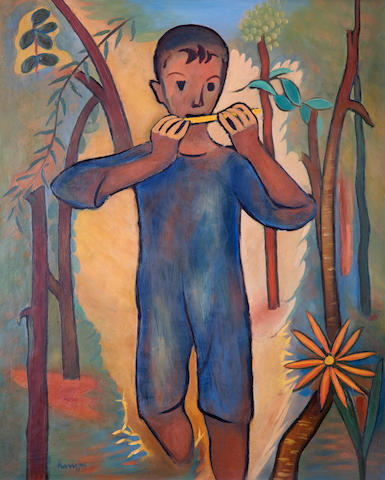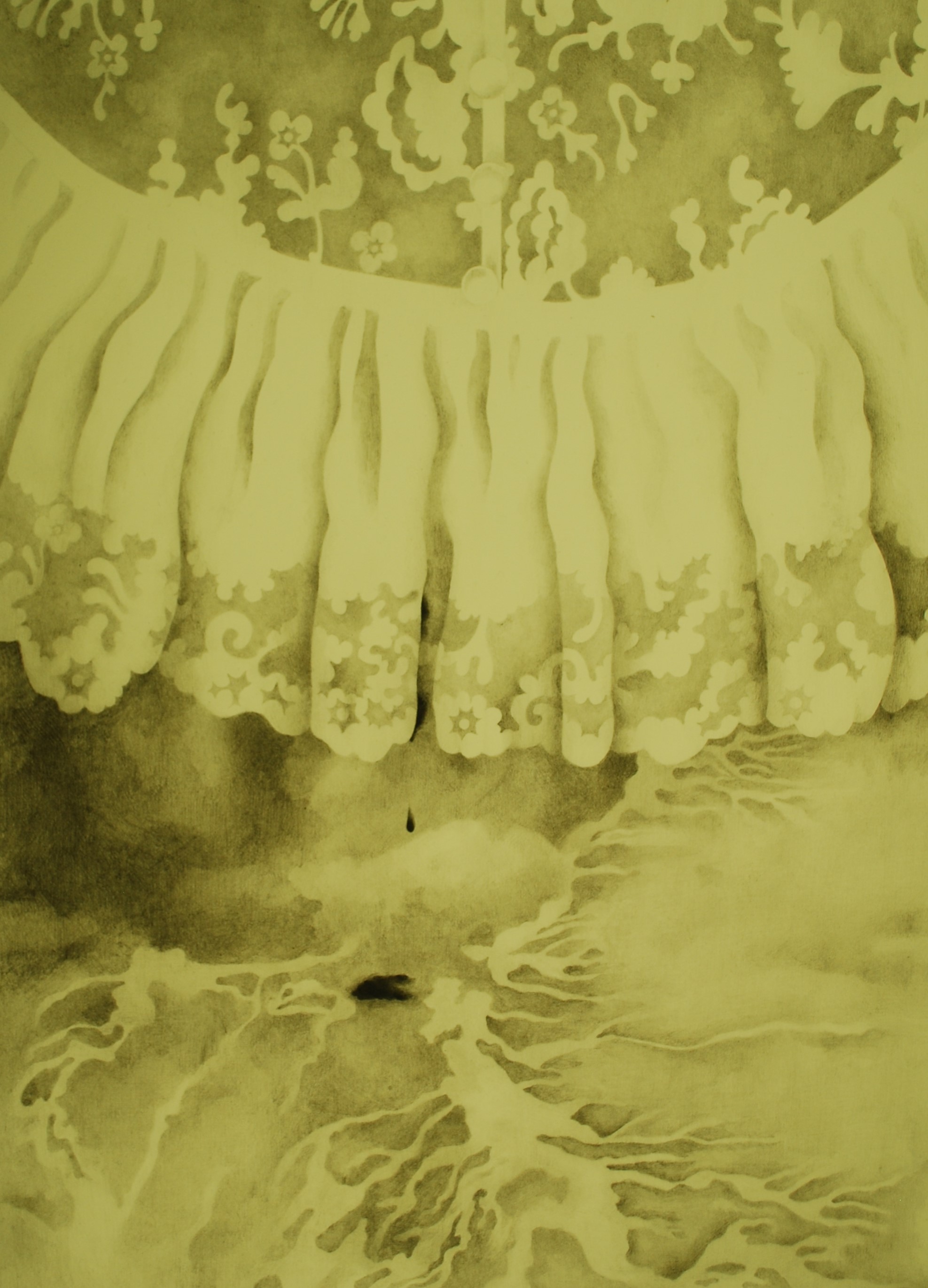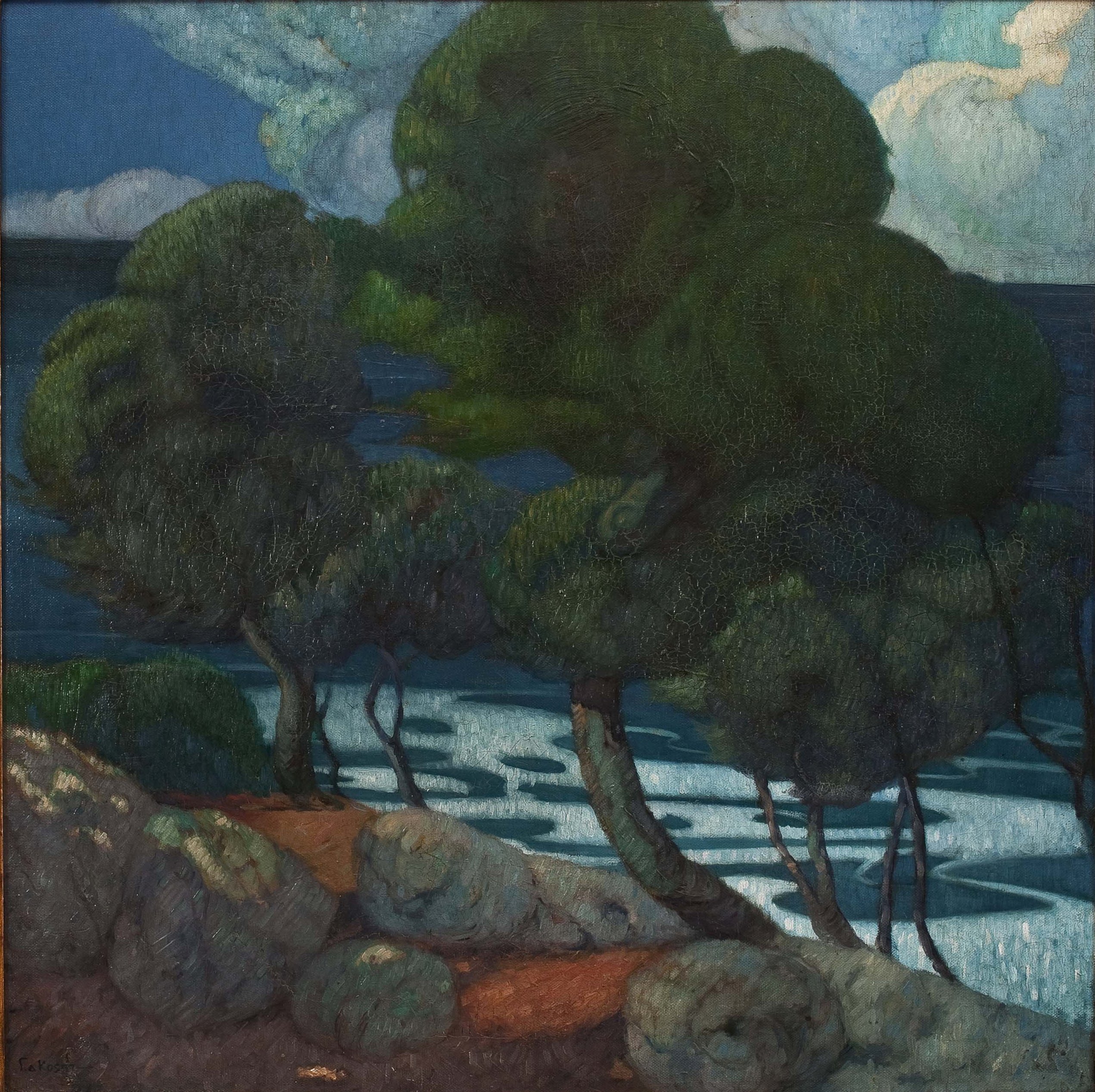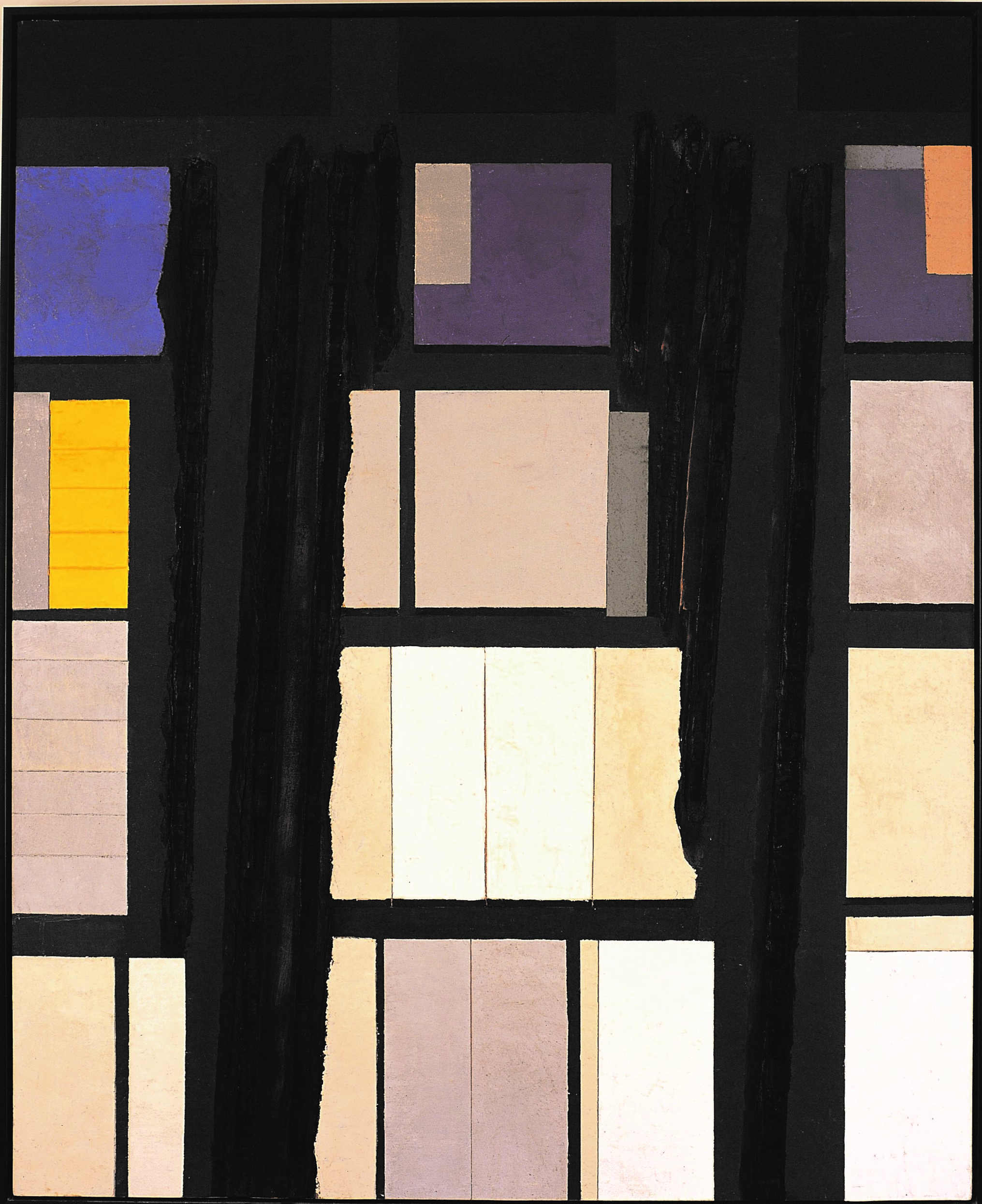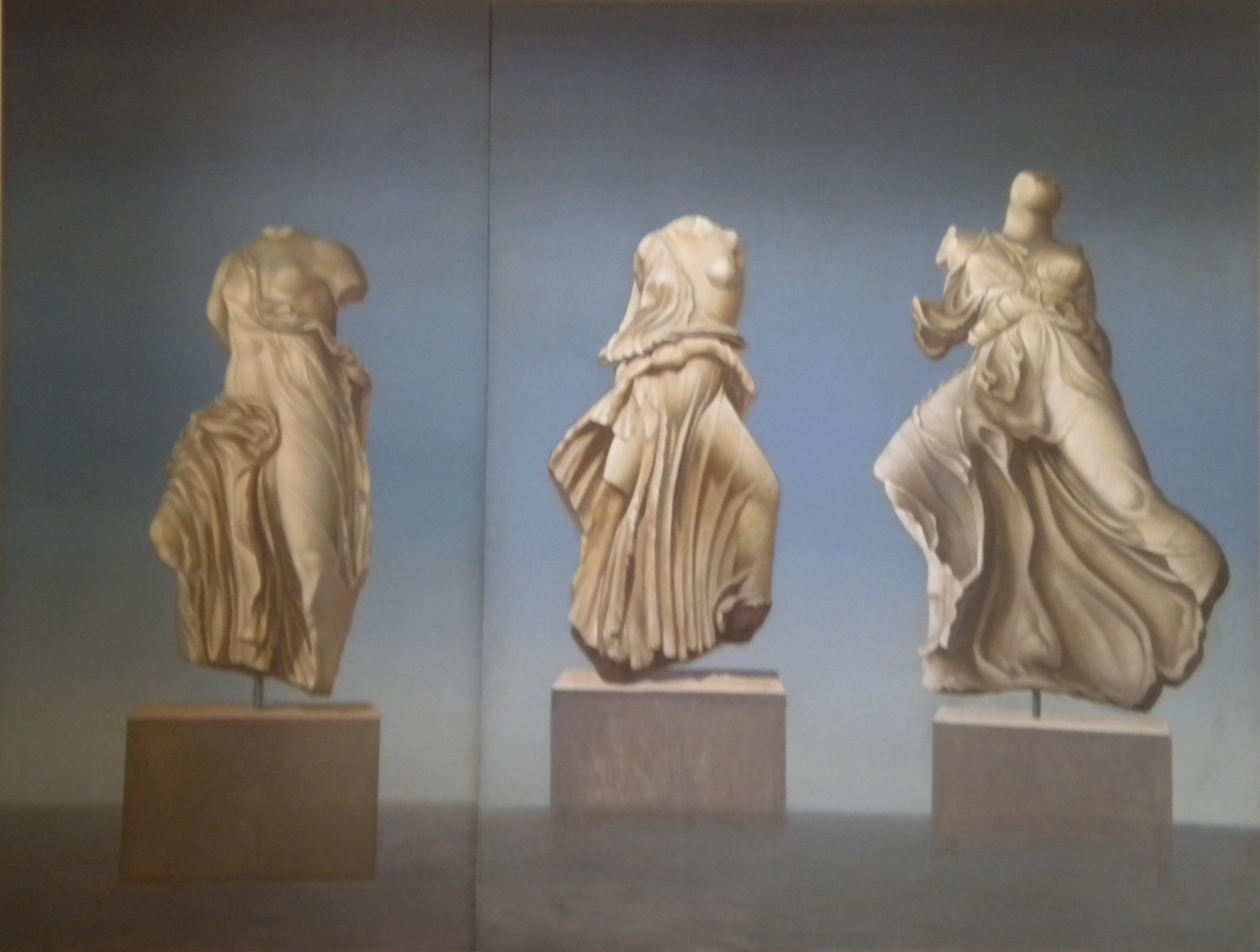Orestis Kanellis, The Child with the Sunflower
The Child with the Sunflower by Orestis Kanellis is an important piece of Greek post-war painting. The painter lived in Paris during the interwar period and worked extensively with children’s portraits. The painting reflects that artist’s influences from the fauvists, who loved bold colours. It also shows influences from Expressionism.
Bright colours over a blurred background
The painting The Child with the Sunflower shows clear Fauvism elements. It is a composition full of light and blinding colours.
The figure of the boy playing the flute is presented on a blurred background. A glorious yellow colour, like a bright aura, surrounds the child. Colour spreads diluted and translucent, owing to a technique that resembles aquarelle.
The trees have bold outlines and dark hues. They resemble vertical lines that surround the child with wisdom.
At the top, scattered branches with leaves of every kind add the necessary green.
The child
The face of the boy has simple, but very expressive features.
The body is coloured with a bold blue. Bright openings of white and light ochre interrupt the blue, shaping the volume of the silhouette. The movement of the bent right leg directs the figure towards the audience.
The slender figure is rendered almost exclusively in colours. The cold blue tones are harmoniously combined with the warm orange and red hues. The entire picture is almost pulsating in light and simultaneously structured by light.
The child appears almost dematerialised. Any attempt to render the figure by sketching it subside, and colour becomes the protagonist of the composition.
The sunflower
It stands out, open, drawn by free hand at the bottom right. It is an impressive circle, its diameter equal to the face of the boy.
The sunflower boasts the boldest colour on the painting and captures the eyes of the child. In this manner, the flower appears to form the connection between man and nature.
Symbolism in the painting
The painting The Child with the Sunflower depicts a fresh, momentary representation of a human figure in nature.
However, the painting can also be interpreted as a symbol of the young musician’s energy and vigour, matching the vitality and optimism of the blooming nature.
Kanellis captures this enchanting allegory with a purely personal style, both lyrical and poetic. He creatively transforms the main features of movements such as Expressionism and abstraction.
His life in a nutshell
Orestis Kanellis (1910-1979) was born in Smyrna and grew up on the island of Lesvos, where he finished high school. He enrolled at the Medical School of Athens, but dropped out after 2 years.
As painting won him over, he moved to Paris where he stayed from 1930 until 1932. He studied in free Fine Art academies, and mainly at the Académie de la Grande Chaumière.
After the war, he lived in Athens and travelled to many European countries. Besides painting, he also worked as an art critic and published essays on art.
Artistic influences
In Paris, Kanellis met painter Georges Gounaropoulos, who become his most important teacher. He also met Stratis Eleftheriadis-Tériade, an art critic, publisher and collector from Lesvos.
Kanellis became acquainted with the work of French painter and sculptor André Derain, who was part of the fauvists circle.
The term “Fauvism” comes from the French word “fauve”, meaning “wild beast”. The fauvists loved bold, wild colours, design simplification and contrasts. The most important representative of Fauvism is Henri Matisse.
Favourite themes
Kanellis’ paintings fall into 2 main themes:
- Landscapes and seascapes.
- Human forms, women and mainly children.
The paintings of the gaunt children he created during WWII and the German Occupation are still considered iconic.
Artistic style
The paintings of Orestis Kanellis depict recognisable, realistic images. He is interested in capturing the reality that surrounds him, in a representational manner.
However, his style also draws from abstract painting:
- Simplification of form.
- Minimisation of descriptive details.
Moreover, Kanellis uses elements of Expressionism, such as expressiveness and the power of rendition.
A recognised artist
Orestis Kanellis was almost self-taught. He had, however, a genuine talent for assimilation and a special sensitivity in colour processing.
This helped him shine as one of the most important painters of Greek post-war painting.
He held numerous solo exhibitions and also participated in group exhibitions. His works were presented at the Venice Biennale in 1934 and the Alexandria Biennale in 1954.
An important asset
The painting belonged to Philippos Koutsinas, an important collector from Volos. In 1978 Koutsinas lent the painting to Orestis Kanellis’ retrospective exhibition at the National Gallery.
In 1993 the painting was featured in the exhibition “The Child in modern-Greek Art”, again at the National Gallery.
The work of art in our publications
The painting The Child with the Sunflower by Orestis Kanellis is referenced in the Alpha Bank Mazi magazine (issue 76, July-August 2021).
In other literature
The painting The Child with the Sunflower by Orestis Kanellis is referenced in the book The Work and Wonderful Days of Philippos Koutsinas by Elisavet Plessa (in Greek).
The Alpha Bank Art Collection is not open to the public.
Research visits to the Art Collection can be organised upon request.
Contact us to book your visit.
